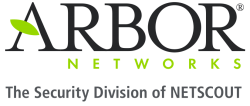Creating Effective Contact Forms for Lead Capture and Conversion Optimization
A well-designed contact form is an indispensable tool for businesses to capture leads, gather valuable customer information, and drive conversions. This article delves into the intricacies of creating effective contact forms that cater to the needs of web-savvy users, including web developers, hosting providers, webmasters, and system administrators.
Understanding the Importance of Contact Forms for SEO
Contact forms play a crucial role in improving your website's SEO ranking by providing a direct channel for user engagement and communication. Search engines recognize websites with easily accessible contact information as more trustworthy and credible. Moreover, contact forms contribute to a positive user experience, reducing bounce rates and encouraging visitors to spend more time on your site.
Key Elements of an Effective Contact Form
When designing a contact form for experienced web professionals, it's essential to prioritize clarity, conciseness, and user-friendliness. Here are the key elements to consider:
1. Strategic Placement
Position your contact form prominently on your website, ensuring it's easily visible and accessible from all pages. Consider placing it above the fold on your homepage, in the header or footer, or on a dedicated "Contact Us" page.
2. Minimalist Design
Keep your contact form clean, uncluttered, and visually appealing. Avoid using too many fields, as this can overwhelm users and lead to form abandonment.
3. Clear and Concise Fields
Use clear and descriptive labels for your form fields, ensuring that users understand what information is required. Keep the fields concise and relevant to the purpose of the form.
4. Mobile Responsiveness
With the increasing use of mobile devices, it's imperative that your contact form is fully responsive and optimized for different screen sizes. This ensures a seamless user experience across all devices.
5. Secure Submission Process
Implement robust security measures to protect user data and prevent spam submissions. Utilize SSL encryption, CAPTCHA verification, and other security protocols to safeguard your contact form.
Optimizing Contact Forms for Lead Capture
To maximize lead capture, consider incorporating the following strategies:
1. Progressive Profiling
Instead of asking for all information upfront, implement a progressive profiling approach. Start with a few essential fields and gradually request more detailed information as the user engages further.
2. Personalized Messaging
Tailor your contact form's messaging to resonate with your target audience. Use language that is relevant to their industry and addresses their specific pain points.
3. Incentive-Based Submissions
Offer incentives, such as exclusive content, discounts, or free consultations, to encourage users to complete the form. This can significantly improve your lead generation efforts.
Integrating Contact Forms with CRM and Email Marketing Systems
Integrating your contact forms with Customer Relationship Management (CRM) and email marketing systems allows you to automate lead nurturing, track customer interactions, and personalize your marketing campaigns. This seamless integration streamlines your workflow and enhances the overall efficiency of your sales and marketing efforts.
















